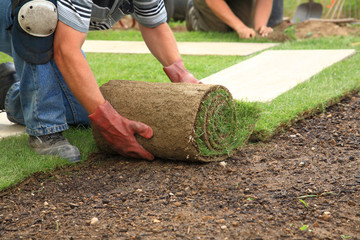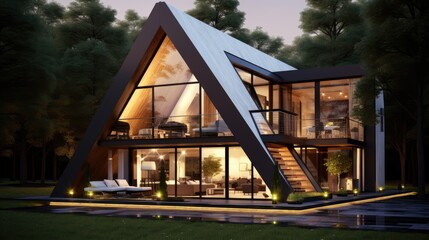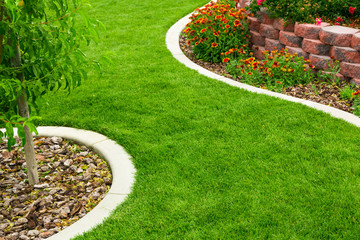Landscaping Design Principles
Whether you’re designing your own home, landscaping a commercial property or simply trying to enhance the look of your front or backyard, some basic principles can help you create a beautiful landscape. The principles of color, scale, form, texture and line can achieve a pleasing design. The basic concept of landscape design is achieving harmony and unity through these elements.

While landscaping does contribute to protecting the environment, it is also important to remember that overgrowth can cause serious problems for your property. If the plants are unchecked, their roots can penetrate your house’s foundation and enter your plumbing. Overgrown branches can pose serious threats as well. To avoid any problems with the health of your greenery, it’s important to hire a landscaper who values the environment. These professionals will be careful not to harm the greenery during landscape maintenance.
Color greatly impacts how the human eye perceives and interacts with the landscape. It can evoke a range of emotions, from calm and relaxation to excitement and energy. Colors can also be used to accentuate the structure, texture and shape of a design. They can create a focal point and draw attention to a specific part of the garden.
Designers rely on color theory to understand how colors work together and to identify potential color schemes for their projects. The basic guiding principles include using the primary and secondary colors of the color wheel, tints and shades, and complementary color pairs. One of the most popular color schemes is monochromatic, where a single color is used with various shades and tints. This allows designers to add variety without adding too much complexity.
The landscape design uses form, line, color, texture and scale to create a pleasing and functional outdoor space. This can be achieved by properly using plant material, water, soil, elevation and hardscape features. In the context of landscaping, form refers to a three-dimensional object, usually a plant, but it can also be an architectural element like a pond or a fence. It can be geometric, asymmetrical or freeform.
Depending on the design’s style, the landscape’s shape and form can influence how people look at and move around the garden. Geometric designs often utilize straight lines and clean shapes while asymmetrical, freeform styles favor curved lines, winding walkways and trees and shrubs that follow the land’s natural contours.
Adding texture to the landscape can add depth and visual interest. It can also highlight different plant varieties and create contrast. Texture is the surface characteristics of a material or object, such as a plant’s leaves or bark, wood or stone. These characteristics’ size, shape, density and arrangement can vary greatly from one surface to another.
Large leaves can create coarse texture, leaves with irregular edges or bold veins, thick stems and trunks, and so on. The fine texture is usually created by small foliage, thin strappy leaves (grasses), tiny dense twigs, vines and sometimes flowers. For a landscape to look cohesive, it must incorporate bold and soft plants. Pairing these opposite ends of the texture spectrum can make a garden stand out.
Balance is one of the most important aspects of landscaping design. It creates equality and cohesiveness in a design while also creating curiosity and movement. Whether your landscape design is symmetrical or asymmetrical, balance is essential to creating a great-looking space. Symmetrical balance is achieved by repeating elements from one side of the garden to the other.
Asymmetrical balance is accomplished by using groupings of plants that contrast in color, shape or density. This creates a pleasing effect and is a fun way to mix up the types of plants in your yard.
One of the most important principles of landscaping design is unity. This is achieved through repetition and consistency. Achieving a sense of unity in your landscape design can be challenging, but it can be accomplished through time-honored design themes and styles.
The design elements of color, form, texture, and scale can be adjusted to create a cohesive and appealing design. The correct colors can make a landscape appear more dimensional and visually interesting.
Other design elements that can be used to achieve unity are symmetry and repetition. These can be achieved by using items with the same shape, line, form, and texture or different ones with contrasting colors.
Sustainable landscapes reduce pollution by reducing the need for water and soil. They also require less watering and maintenance. These factors lower the need to transport polluting resources over long distances. They also consider wildlife and site conditions, such as soil conditions. And healthy soil is essential for good plant growth and supporting healthy microorganisms. In the long run, this means more disease-resistant plants! And besides all of these, sustainable landscapes are beautiful, too.




